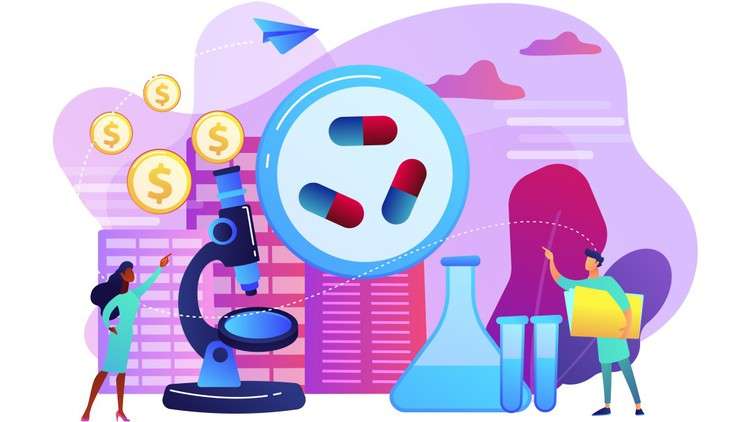
Complete Beginner’s Guide of Top Amino Acid/Protein Databases used in Bioinformatics along with their Utilization
What you will learn
You will learn 15+ Amino Acid / Protein Different Databases used in Bioinformatics
You will learn the Whole Concept of Databases
You will learn about the Primary Databases in Bioinformatics
You will learn about the Secondary Databases in Bioinformatics
You will learn about the Amino Acid / Protein Databases in Bioinformatics
Complete up-to Date Beginner’s Guide of top Amino Acid / Protein Used in Bioinformatics along with their utilization
Tools Used in Amino Acid / Protein Databases
Description
This Bioinformatics course is going to game changer for you. Currently, there is an explosion of biological data. Bioinformatics is at the intersection of biology and computer science.
What is Bioinformatics ?
In biology, bioinformatics is defined as, “the use of computer to store, retrieve, analyze or predict the composition or structure of bio-molecules” . Bioinformatics is the application of computational techniques and information technology to the organization and management of biological data. Classical bioinformatics deals primarily with sequence analysis.
Aims of Bioinformatics
- Development of database containing all biological information.
- Development of better tools for data designing, annotation and mining.
- Design and development of drugs by using simulation software.
- Design and development of software tools for protein structure prediction function, annotation and docking analysis.
- Creation and development of software to improve tools for analyzing sequences for their function and similarity with other sequences
Biological Databases
Biological data are complex, exception-ridden, vast, and incomplete. Therefore several databases have been created and interpreted to ensure unambiguous results. A collection of biological data arranged in a computer-readable form that enhances the speed of search and retrieval and convenient to use is called a biological database. A good database must have updated information.
Importance of Biological Database
A range of information like biological sequences, structures, binding sites, metabolic interactions, molecular action, functional relationships, protein families, motifs and homologous can be retrieved by using biological databases. The main purpose of a biological database is to store and manage biological data and information in computer readable forms.
In this course we learned about the different biological databases that are being used in bioinformatics and get to know a little bit about their details. Mainly these databases are divided into four categories and we learned about them base by base. And explained the difference among the primary and secondary database and explained their utilization in bioinformatics.
Amino acid / protein databases
Several publicly available data repositories and resources have been developed to support and manage protein related information, biological knowledge discovery and data-driven hypothesis generation. The databases in the table below are selected from the databases listed in the Nucleic Acids Research (NAR) databases issues and database collection and the databases cross-referenced in the UniProtKB. Most of these databases are cross-referenced with UniProt / UniProtKB so that identifiers can be mapped to each other.
Sequence databases
CCDS The Consensus CDS protein set database
DDB JDNA Data Bank of Japan
ENA European Nucleotide Archive
GenBank GenBank nucleotide sequence database
Refseq NCBI Reference Sequence Database
UniGene Database of computationally identifies transcripts from the same locus
UniProtKB Universal Protein Resource (UniProt)
3D structure protein databases
DisProt Database of Protein Disorder
MobiDB Database of intrinsically disordered and mobile proteins
ModBase Database of Comparative Protein Structure Models
PDBsum Pictorial database of 3D structures in the Protein Data Bank
ProteinModelPortal Protein Model Portal of the PSI-Nature Structural Biology Knowledgebase
SMR Database of annotated 3D protein structure models
This course will be extremely helpful to students of data analyst and bioinformaticians because they use the databases a lot in their work.
If you guys have any questions or suggestions please let me know in instructor inbox I’ll try to answer all of your questions within 12 hours.
Content